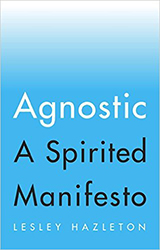It’s weird how a single scene from a movie can stay with you. Like this piece of American noir:
A fedora-hatted gumshoe walks into a Chinese eatery. He heads for the back booth where an over-sized guy with a bowl in one hand and chopsticks in the other is steadily shoveling food into his mouth. The gumshoe wants information, and tosses a banknote on the table. The other guy delicately picks up the banknote with his chopsticks, tucks it into his vest pocket, and keeps right on eating.
I so envied that nonchalant chopstick deftness. A mere thirty seconds of screen time, but it stayed with me even though nothing else of the movie did. I had no idea what it was called, or where I’d seen it (late-night TV?), or who was in it (Bogart?). So for years – decades – I recounted the scene over Japanese or Chinese or Thai food in the hope that someone would recognize it. And finally, a month ago, someone did. A New York friend who’d been on a noir binge in preparation for a course he was teaching sent an email titled “That movie.”
 Pickup on South Street. 1953. Directed by Sam Fuller. Starring Richard Widmark.
Pickup on South Street. 1953. Directed by Sam Fuller. Starring Richard Widmark.
Yay! I found a copy, and I was right, it was a great scene. It was a wonderful damn scene. Yet while it was exactly as I remembered it, it was also not at all as I remembered it.
The chopstick magic was there – not once, but twice, as more money was tossed on the table until the overweight guy (going by the irresistible moniker of Lightning Louie) was persuaded to talk. But where the scene played in my memory with the camera full front on him, he was shown the whole time in profile, from the side. The camera was fronted on the gumshoe, seated not across from him in a booth, but cater-corner at a table.
And there was no fedora. In fact there was no gumshoe. ‘He’ was she – Jean Peters, the female lead, playing the ballsy yet vulnerable dame trying to find a bad-on-the-surface/good-at-heart guy in trouble (that’d be Widmark, of course).
I watched the rest of Pickup on South Street as though for the first time. I had no memory of it, despite the great camera angles and a terrific cast of characters. Only that one cherished scene was familiar, told so many times to friends and drastically re-created in the process. In essence, I’d re-shot the scene, usurping Sam Fuller’s role as director.
I like to think I’m a good observer. As a psychologist, I should surely have a clear eye. I know how malleable memory is, how it has a way of adapting itself to desired narrative, to what we think should have or could have been. But here was proof positive that I’m no more immune than anyone else. I wanted the gumshoe. I wanted the fedora. And because I was entranced by Lightning Louie’s ability to pick up banknotes with chopsticks, I wanted him head on.
As a wise friend said, “we all write our own scripts.”




Indeed, we do write our own scripts, whether we’re aware of it or not. Memory is a construct; not an organic thing and that’s hard to ‘remember’!
Isn’t that so like history it’s all seen from different prospects according to which side your on.
Thank you. Fwd to a psych named Louie in my extended family. Hope you are well.